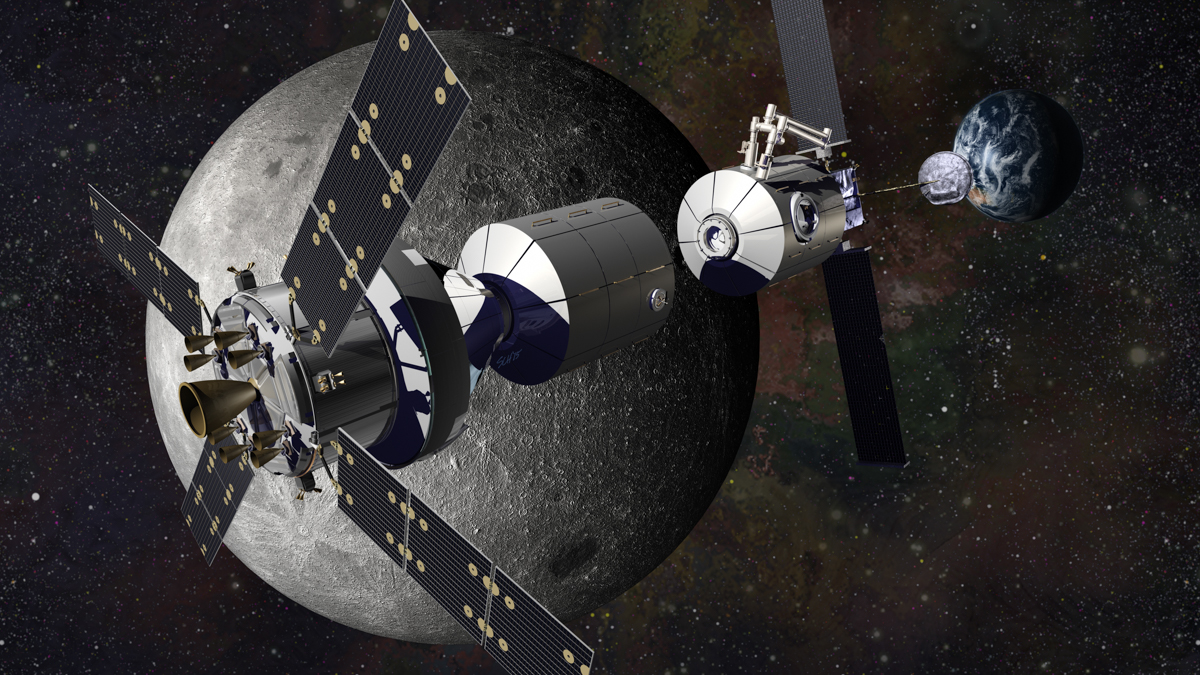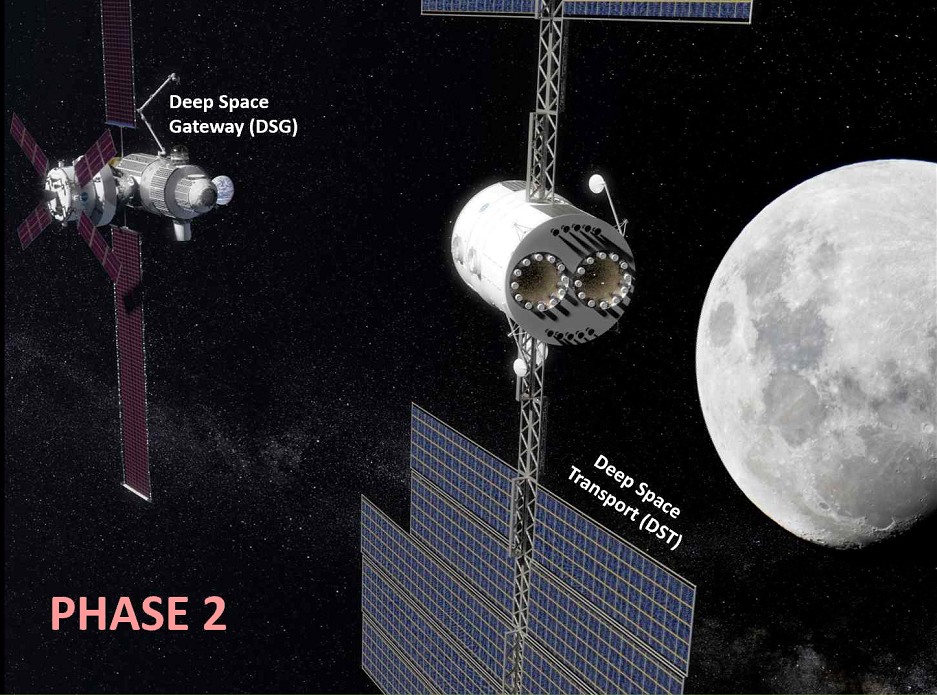 The artistic image of the orbital base Deep Space Gateway. Illustration: Lockheed-Martin
The artistic image of the orbital base Deep Space Gateway. Illustration: Lockheed-MartinOn September 27, 2017, during the 68th International Astronautical Congress in Adelaide (Australia), an important event for the Russian cosmonautics took place. On this day, the United States and the Russian Federation signed a joint statement on the exploration and exploration of deep space, according to
a NASA press release and a
press release from Roskosmos . First of all, Roscosmos will take part in the construction of the
Deep Space Gateway base in circumlunar space. According to the preliminary plan, this base
will become a platform for traveling to Mars for other space missions.
“The joint statement reflects a common vision of space exploration that is shared by NASA and Roskosmos,” a NASA press release said. “Both agencies, as well as other partners in the International Space Station, view Deep Space Gateway as a strategic component of the space research architecture, which requires additional study. NASA has already attracted industry partners to explore the concept of Deep Space Gateway. Roscosmos and other partners in the station are preparing for the same. "
“Although Deep Space Gateway is still in the conceptualization stage, NASA is pleased to see growing international interest in moving to moonlight as the next step in advancing space exploration,” said Robert Lightfoot, NASA Acting Administrator. NASA apartment in Washington. “Statements like those signed with Roscosmos show that the gateway concept is a tool for implementing a research architecture that will be accessible and supported.”
According
to NASA’s plan , astronauts must build and test systems at Deep Space Gateway before traveling into deep space, including to Mars. Here they will check the robotic missions with the descent to the lunar surface. Astronauts from near-moon space will be able to return home within a few days in the event of a problem.
The exploration of near-moon space will begin with the first launch of the Space Launch System (SLS) launch vehicle with the Orion spacecraft. The three-week unmanned research mission is called the
Exploration Mission-1 (EM-1).
Deep Space Gateway, which will become the gateway for studying the lunar surface and an intermediate stage before sending astronauts to Mars. Here there will be an energy source, a residential module, a docking module, a lock chamber, a logistics module. The power plant will use mainly electric traction to hold the position of the lunar station or move to different orbits for different missions in the vicinity of the Moon.
The three main modules of the lunar station - the power plant, the residential module and the logistics module - will be lifted into orbit by the SLS rocket and delivered by the Orion spacecraft. NASA is going to maintain and use Deep Space Gateway with its partners, both commercial companies and foreign partners. One of the partners will be Roskosmos.
According to the agreement, Roskosmos will take part not only in operation, but also in the construction of the station: “At the first stage, we will build the orbital part with the further prospect of using proven technologies on the lunar surface, and subsequently - Mars,”
said the General Director of Roskosmos Igor Komarov. . Roscosmos writes that the parties “came to an understanding on the standards of the docking station of the future station. Given the serious domestic experience in the development of docking stations, the future elements of the station will be created on the basis of Russian developments, as well as the standards of life support systems. The developed standards will be used by all countries in developing and building their space technology. ”
According to Komarov, the parties tentatively discussed the contributions of the participating countries to the project: “Our contribution can be to create from one to three modules and standards of a unified docking mechanism for all ships that will be docked to the station. In addition, Russia intends to use the super-heavy launch vehicle currently being built to bring structures into circumlunar orbit, ”Komarov said.
Russian plans are not limited to this. Sergey Krikalev, Director of the Roskosmos Manned Program, noted that in addition to the airlock module, Russia could also develop a residential station for the new station.
In addition, in order to deliver cargo to the station construction site, it is possible to use the Russian heavy rocket carriers Proton-M and Angara A5M in parallel with SLS.
But all this is a theory, since the concluded agreement is purely conceptual and there are no specific joint projects: “We have now signed a joint statement of intent to work on the near-moon station project, and later on working out missions on the surface of the Moon and Mars. The contract itself requires serious study already at the state level, ”Komarov explained.
Deep Space Gateway will be the main base for servicing the future Deep Space Transport (DST) spacecraft, specially designed for flights in deep space, including to Mars. It will be a reusable electric and chemical craft. The ship will take people from the lunar spaceport, take them to Mars or to another destination - and then return back to the Moon. Here the ship can be repaired, filled - and sent to the next flight.

Testing of the ship will take place in the next decade, and at the end of the 2020s, NASA plans to conduct one-year tests of Deep Space Transport with the crew. Astronauts will spend 300-400 days in the near-moon space. Thanks to the new arrangements, it is likely that among these astronauts there will be Russian cosmonauts.